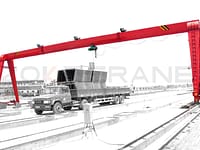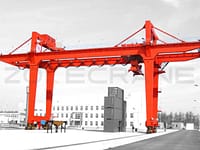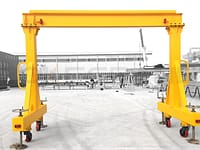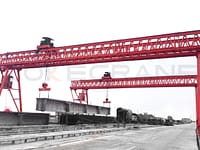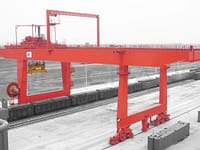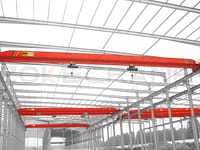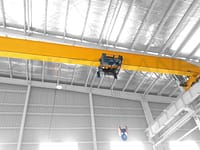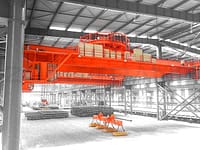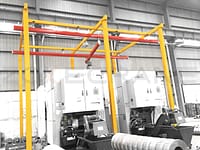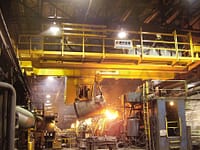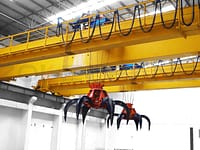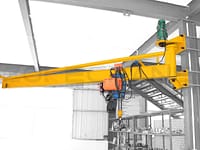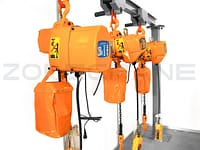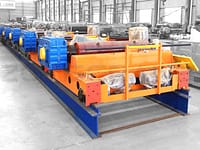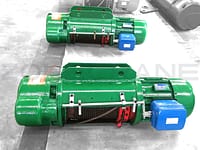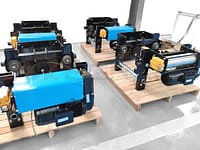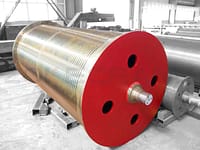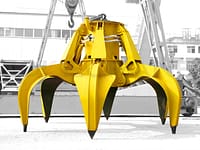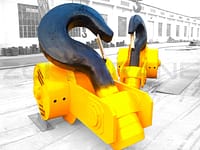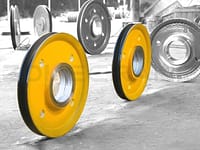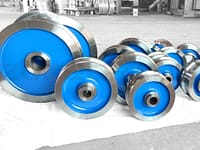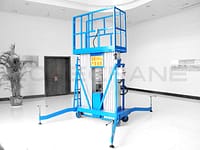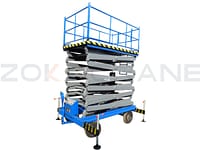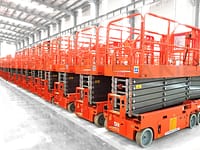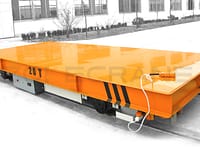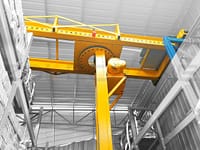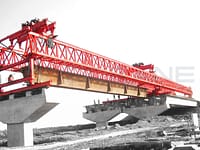Gantry cranes are versatile lifting devices used in various industries and applications. They are characterized by their overhead horizontal beam (bridge) supported by legs on both ends. Gantry cranes offer flexibility, efficiency, and convenience in material handling operations. In this article, we will explore the different types of gantry cranes, including their advantages, disadvantages, and suitable environments.
Single Girder Gantry Crane

Single girder gantry cranes feature a single horizontal beam (girder) supported by legs on each end. They are cost-effective and suitable for light to medium lifting tasks. The advantages of single girder gantry cranes include:
Advantages:
- Lower initial cost compared to double girder gantry cranes.
- Compact design, requiring less space for installation.
- Lighter weight, allowing for easier transportation and assembly.
- Suitable for applications where high lifting capacity is not required.
- Versatility in material handling operations.
Disadvantages:
- Limited lifting capacity compared to double girder gantry cranes.
- Reduced stability and resistance to lateral forces.
- Not ideal for heavy-duty lifting tasks.
Suitable Environments:
- Warehouses and workshops with light to medium lifting requirements.
- Manufacturing facilities with versatile material handling needs.
- Construction sites with smaller loads and restricted space.
Double Girder Gantry Crane

Double girder gantry cranes have two horizontal beams (girders) supported by legs on both ends. They provide increased lifting capacity and are suitable for heavy-duty applications. The advantages of double girder gantry cranes include:
Advantages:
- Higher lifting capacity compared to single girder gantry cranes.
- Enhanced stability and resistance to lateral forces.
- Suitable for handling heavier loads and long spans.
- Ideal for outdoor applications with variable weather conditions.
- Can accommodate various lifting accessories and special attachments.
Disadvantages:
- Higher initial cost due to the complexity of the design.
- Requires more space for installation and operation.
- Heavier weight, requiring stronger support structures.
- Longer assembly and installation time compared to single girder gantry cranes.
Suitable Environments:
- Construction sites with heavy loads and long spans.
- Shipbuilding yards for lifting and moving large ship components.
- Steel manufacturing facilities for handling heavy steel structures.
- Industrial applications requiring high lifting capacities.
Rubber-Tired Gantry Crane (RTG)

Rubber-tired gantry cranes, or RTGs, are mobile gantry cranes that use rubber tires for movement. They are commonly used in shipping yards and container terminals for stacking and moving shipping containers. The advantages of RTGs include:
Advantages:
- Mobility and flexibility for container handling operations.
- Ability to travel between container rows with ease.
- Quick and efficient stacking and destacking of containers.
- Reduced infrastructure requirements compared to rail-mounted cranes.
- Flexibility in adjusting the container stacking layout.
Disadvantages:
- Limited lifting capacity compared to rail-mounted gantry cranes.
- Restricted to flat and stable surfaces for smooth operation.
- Higher maintenance requirements for tires and mobility systems.
- Increased fuel consumption for mobile operations.
Suitable Environments:
- Container terminals and shipping yards with container handling needs.
- Ports and harbors with frequent container stacking and movement.
- Intermodal facilities requiring flexible container positioning.
Rail-Mounted Gantry Crane (RMG)

Rail-mounted gantry cranes, or RMGs, are gantry cranes designed for rail-mounted operation. They are commonly used in intermodal terminals and container yards. The advantages of RMGs include:
Advantages:
- Efficient container handling along rail tracks.
- High stacking capabilities, allowing for maximum use of vertical space.
- Precise positioning and alignment of containers.
- Reduced ground space requirements compared to other gantry crane types.
- Lower maintenance costs for rail systems compared to rubber tires.
Disadvantages:
- Limited mobility restricted to the rail track.
- Higher initial investment due to the requirement of rail infrastructure.
- Longer installation and setup time compared to other gantry crane types.
- Requires specialized personnel for rail maintenance and operation.
Suitable Environments:
- Intermodal terminals and container yards with rail infrastructure.
- Ports and harbors with extensive container handling operations.
- Rail-connected logistics hubs and distribution centers.
Portable Gantry Crane

Portable gantry cranes are lightweight and mobile, offering flexibility in various applications. They are commonly used for maintenance and repair tasks, as well as in workshops and construction sites. The advantages of portable gantry cranes include:
Advantages:
- Easy transportation and setup in different locations.
- Quick assembly without the need for permanent installation.
- Versatility in handling different loads and materials.
- Cost-effective solution for temporary lifting requirements.
- Adjustable height and span options for customized applications.
Disadvantages:
- Limited lifting capacity compared to larger gantry crane types.
- Reduced stability compared to fixed gantry cranes.
- Restricted to lighter loads and shorter spans.
- Requires level ground for safe operation.
Suitable Environments:
- Construction sites for temporary lifting needs.
- Workshops and maintenance facilities.
- Events and exhibitions for light-duty lifting tasks.
- Locations with limited space or access restrictions.
Gantry cranes come in various types, each designed to cater to specific lifting requirements and operating environments. Single girder gantry cranes offer cost-effectiveness and versatility, while double girder gantry cranes provide higher lifting capacities for heavy-duty tasks. Rubber-tired gantry cranes and rail-mounted gantry cranes excel in container handling operations, while portable gantry cranes offer flexibility and mobility. By understanding the advantages, disadvantages, and suitable environments of each gantry crane type, businesses can make informed decisions and select the appropriate crane for their specific needs.
